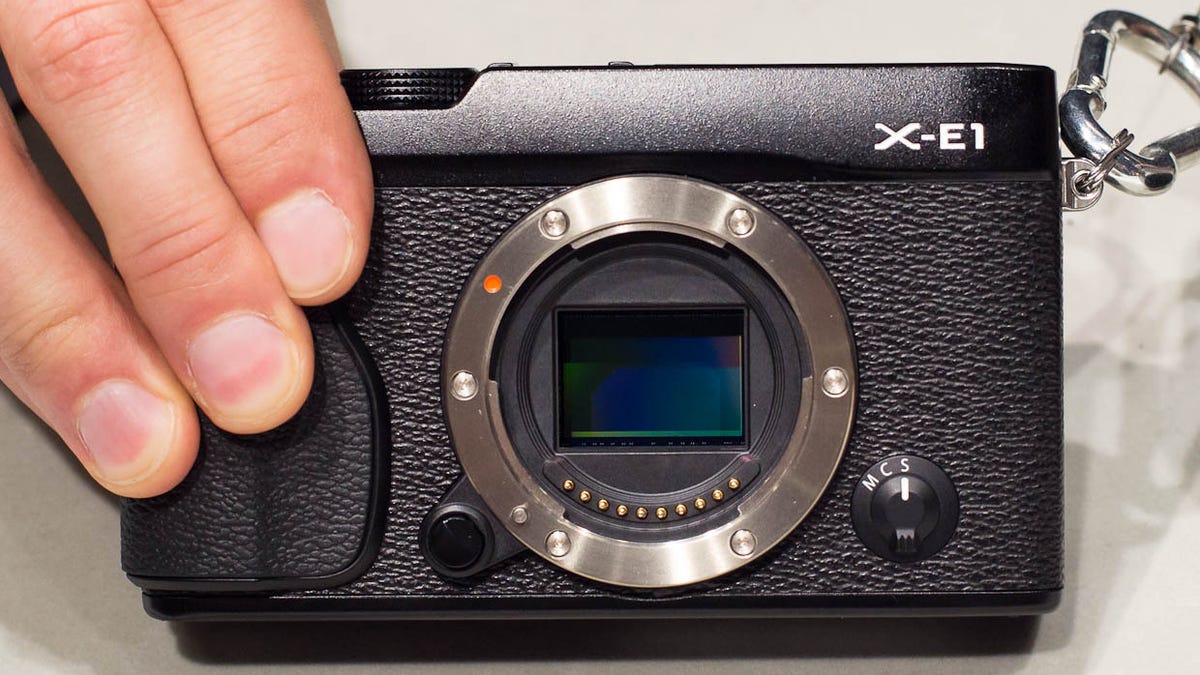Lightroom 4.2 supports large swath of new cameras
Many of the new higher-end cameras that emerged at Photokina now are supported by Adobe's software for photo editing and cataloging, including Canon's EOS T4i, Fujifilm's X-E1, the Leica S, and the Nikon 1 J2.

With the Photokina show in Germany producing so many new high-end cameras, it's evidently been a busy season for Adobe Systems' Lightroom team.
That team just released Lightroom 4.2, which supports 22 new cameras, 43 new lenses, and lets people shoot with 11 new cameras tethered to a computer. It takes work to figure out how to decode each camera's proprietary raw format.
Here's the full list of new cameras supported, but note that the Nikon D600 support is "preliminary and there is a minor risk that the appearance of your images may change when the final support ... is available in an upcoming release":
• Canon EOS 650D / Rebel T4i
• Canon EOS M
• Fujifilm XF1
• Fujifilm X-E1
• Fuji FinePix F800EXR
• Leaf Credo 40
• Leaf Credo 60
• Leica S
• Leica D-LUX 6
• Leica V-LUX 4
• Nikon Coolpix P7700
• Nikon 1 J2
• Nikon D600
• Panasonic DMC-G5
• Panasonic DMC-LX7
• Panasonic DMC-FZ200
• Pentax K-30
• Samsung EX2F
• Sony Alpha NEX-5R
• Sony Alpha NEX-6
• Sony Alpha SLT-A99V
• Sony DSC-RX100
Adobe also got rid of a number of bugs.
Adding that support evidently adds a lot of heft to the software, because the Lightroom 4.2 download now is up to 407MB on OS X and 751MB on Windows.
The $2,100 Nikon D600 is a hot new full-frame camera, meaning that it's got a large image sensor for high image quality. Competitively, it's matched with Canon's equally hot EOS 6D, which has the same price and sensor size and which like it is an attempt to bring the benefits of full-frame shooting to a broader audience. A $2,100 price tag may not sound cheap, but it's several hundred dollars down from the $3000 Nikon D800 and more than a thousand down from the $3,450 5D Mark III. However, Lightroom doesn't yet support the 6D, nor a trio of new higher-end Canon PowerShot compacts, the S110, SX50, and G15.
The Adobe software, which competes with Apple's Aperture, also supports tethered shooting now for the 5D Mark III, top-end EOS-1D X, and a number of other Canon cameras. The Nikon D800, D800E, and top-end D4 also now can be used tethered.
For details on the bug fixes, lenses, and tethering, check Adobe's blog on Lightroom 4.2. The new cameras and lenses also are supported by Adobe's Camera Raw 7.2 plug-in for Photoshop.
To ease the chaos of supporting hundreds of proprietary raw formats, and to try to give photographers a file format that's more likely to last many years, Adobe has created a file format called Digital Negative, or DNG. With Lightroom 4.x, the company added some new DNG features. One was a lossy compression option that sacrifices some image quality in exchange for a significant reduction in file size over the standard lossless compression; another was the ability to store some preview data for faster image loading.
Adobe has been working to make DNG an open standard, but so far it's only been openly documented. Also today, Adobe documented the new DNG 1.4 format with the features available in Lightroom 4.x. The DNG 1.4 specification (PDF) details those new features, along with some others. One is support for transparent pixels, important when blending an image smoothly over a background, and another is support for storing image data with floating-point numbers, which can span a greater range in computers than integers.

